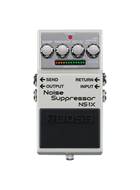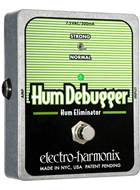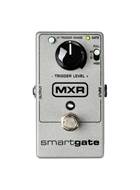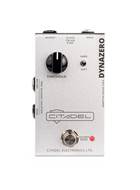Noise Gates & Noise Suppression Pedals
1-11 of 11 productsFilter

BOSS NS-2 Noise Suppressor

KMA Machines Pylon Advanced Transformer Boost Noise Gate

BOSS NS-1X Noise Suppressor

Electro Harmonix Hum Debugger

MXR Smart Gate M135

MXR M195 Noise Clamp

Darkglass NSG Noise Gate

MXR M235 Smart Gate Pro Rack Unit

NUX NRN-1 Huminator Noise Gate Pedal

Ibanez Pentatone PTGATE Noise Gate

Citadel Dynazero Adaptive Noise Gate
About Noise Gate & Noise Suppression Pedals
Noise Gate and Noise Suppression Pedals are essential for most guitarists as they help to prevent feedback and reduce noise. You will find some kind of noise suppressor or noise gate in the signal chain of most guitar players as they can do a great job at reducing and eliminating noise. Originally only available in big studio hardware, they have now become available in handy guitar pedal formats.
Most nose gate pedals will have a threshold control to allow you to dial in at which point the gate kicks in and cuts off the signal. A lot of newer noise suppression pedals will come with preset or intelligent noise reduction modes giving you one less thing to think about when playing. Fast noise detection is great for metal players who want a precise stop during fast rhythm sections but also useful for anyone in a live situation where any unwanted noise could cause issues. Available from brands such as BOSS, MXR, Ibanez, ISP and KMA Machines, there are plenty of options to choose from.
Noise suppressors work by letting anything above a certain volume pass through while killing anything below a certain volume. The ‘threshold’ is how you can pick what this volume is. This doesn’t mean unwanted noise is gone for good, however, it only works when you are not playing. Another way of imagining this is like a child safety gate; kids are only kept out while the gate is shut. As soon as you open it to get through yourself they can get out with you!
Noise gate pedals are particularly popular among metal guitarists. They enable them to play with huge amounts of gain but still have a clean, precise tone without any unwanted hissing and screeching.
What Makes a Noise Gate Pedal Different?
- Helps to prevent feedback and unwanted noise
- A noise suppressor guitar pedal stops unwanted noise
- Essential for those seeking tight staccato rhythms from a high gain sound
- Popular for metal and heavy styles
- Great for the live performance and studio recording
- Clean, precise tone

